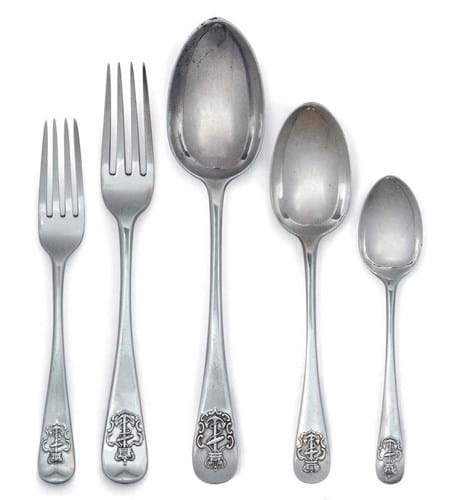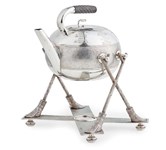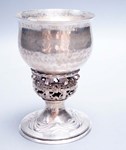One side of this unusual 36oz piece was chased with a depiction of Sir Edwin Landseer’s medieval tableau Bolton Abbey in the Olden Times (the original hangs at Chatsworth). The other has a presentation inscription dated 1873 from Viscountess Montauban, daughter of the Haworth mill owner Richard Shackleton Butterfield, to his doctor Amos Ingham.
Both Ingham and Butterfield were known to the Brontë family. Patrick Brontë, father of Charlotte, had successfully lobbied for better treatment of the workers at Butterfield’s factory. After a report demanded improvements, Charlotte noted in a letter to her father saying “...I cannot help enjoying Mr Butterfield’s defeat – and yet in one sense this a bad state of things – calculated to make working people both discontented and insubordinate.”
Ingham was the local surgeon who saw to Charlotte in February and March 1855 during her last illness and signed her death certificate. A portrait of him is in the Brontë Parsonage Museum.
A fine piece of Victorian silver with a story to tell, it made £3000 (estimate £700-1000) at the auction on July 16.
Anchor weighed up
The same sum was bid online, this time at the lower end of expectations, for a Victorian Admiralty pattern silver table service weighing a total of 112oz.
The rare pattern, depicting a fouled anchor below the royal crown and within scrolls, was first made for use of Royal Navy officers in the early 19th century, with the earliest known extant pieces being hallmarked for 1838.
As this harlequin service shows (it includes pieces by John Samuel Hunt, Francis Higgins, George Adams, John Samuel Hunt, Hunt and Roskell, John Edward Bingham and William Theobalds dating from 1840-77), it was produced by various makers throughout the 19th century although it was discontinued around the time of the First World War.
Admiralty pattern flatware is still in use in RN messes today.
The service at Tennants, with most pieces engraved with the crest of Allsopp and the British Government broad arrow, had been a gift from the RN to Rear-Admiral Hugh Webb Faulkner (1900-69) and came by descent.
















